
[The following is the edited text from Pastor Tim Dickau's sermon given on February 11th, 2018, for the Sunday celebration of the opening of the Co:Here Building.]
Noticing the Action of God in a Secular Age
Living in an age and a part of the world that often excludes or ignores the Divine action, noticing the work of God is not easy. While seeing God at work in our present circumstances can be very difficult, it’s sometimes easier to note the action of God when we look backwards at history. In that case, you sort through all that happens to discover if there is a story line which weaves its way through the events. But even then, clarity is often elusive.
On occasion, however, a story line jumps out at you and cries for attention like a lost child in the middle of a crowded mall looking for their mother. A story line that points to the Spirit’s work within the world. I believe that the story of the Co:Here project is just such a story. It is a story with God's restoration and providence written all over it. Of course, like most Jesus stories, it involves plenty of twists and turns, death and resurrection.
“The Dream is Alive” - The Beginnings of Salsbury Community
Here is the story. I’m starting the story way back in 1996, but like most stories, the starting point is somewhat arbitrary. On April 14th that year, Mary and I were having lunch with Howard and Shirley Bentall. Our topic of conversation was the possibility of their foundation, Hawthorne, buying Napier Lodge, a senior’s home that was for sale 5 blocks north of the church building, in order that we might form a community of people to live there. There had already been a group of people dreaming of such a possibility for some time. For a few months, excitement built as we moved towards purchase and move-in.
And then on July 26th, 1997, we got earth shaking news. We were informed that we would have to make a seismic upgrade to the building if Hawthorne purchased it. (I like to say that the city didn’t mind if the building fell down on seniors but they didn’t want it to fall down on young adults. If you are an urban planter, you know it is not that simple.) With that decision by city planning, and with the owner's refusal to lower the price, the project no longer was financially feasible or sensible.
The group that was forming met a couple months after that disappointment, our faces downcast and our mood sober. This was just one of many points where we thought the dream of community living was dead. However, we met that night with Charles Ringma who shared the vision of community living in homes that were in geographical proximity to each other. Mary suggested that we begin with the two houses the church owns next door as a way to live into this vision. Thus began the journey that has so shaped our church, a journey that our family and others were already embarking on--this practice of sharing home, of sharing life with neighbors close at hand, and of learning to love each other as we rub shoulders more closely. At the end of that meeting, Howard, in his encouraging way, summed up the night with these words: “The dream is alive.”
A Bad Inspection and a New Vision
Another strand that feeds into this story of restoration and providence is the story of Crossroads Community Meal. About twenty years ago at a neighborhood meeting, Ken Paquette asked me what the churches were doing for the increasing number of homeless people on Commercial Drive. "Nothing," I said. I shared that conversation the next Sunday and six months later we started our Thursday evening community meal that continues to this day. As we were forming relationships across all kinds of life situations, we wanted to further these relationships. So we rented a house on 1st Ave where people could meet and talk and be at home. We had computers in the living room, a clothing room, an art room, you could make a meal or take a shower. We were unable to get a social service permit for that place, however, and so we looked elsewhere for a more permanent home. That’s when we made an offer on the house next door to the parking lot with the intention of moving the drop-in center there.
The good news: we got the house. The bad news. We got a really lousy house inspection. Not only could we not establish a social service center there, we later discovered that the house was condemned and needed to be torn down. So what does a community who follows the dying and rising Jesus do at this point? You look for how new life might come from death, for what redemption might look like after a crummy house inspection.
One of the first moves was to transform the parking lot into a community garden.
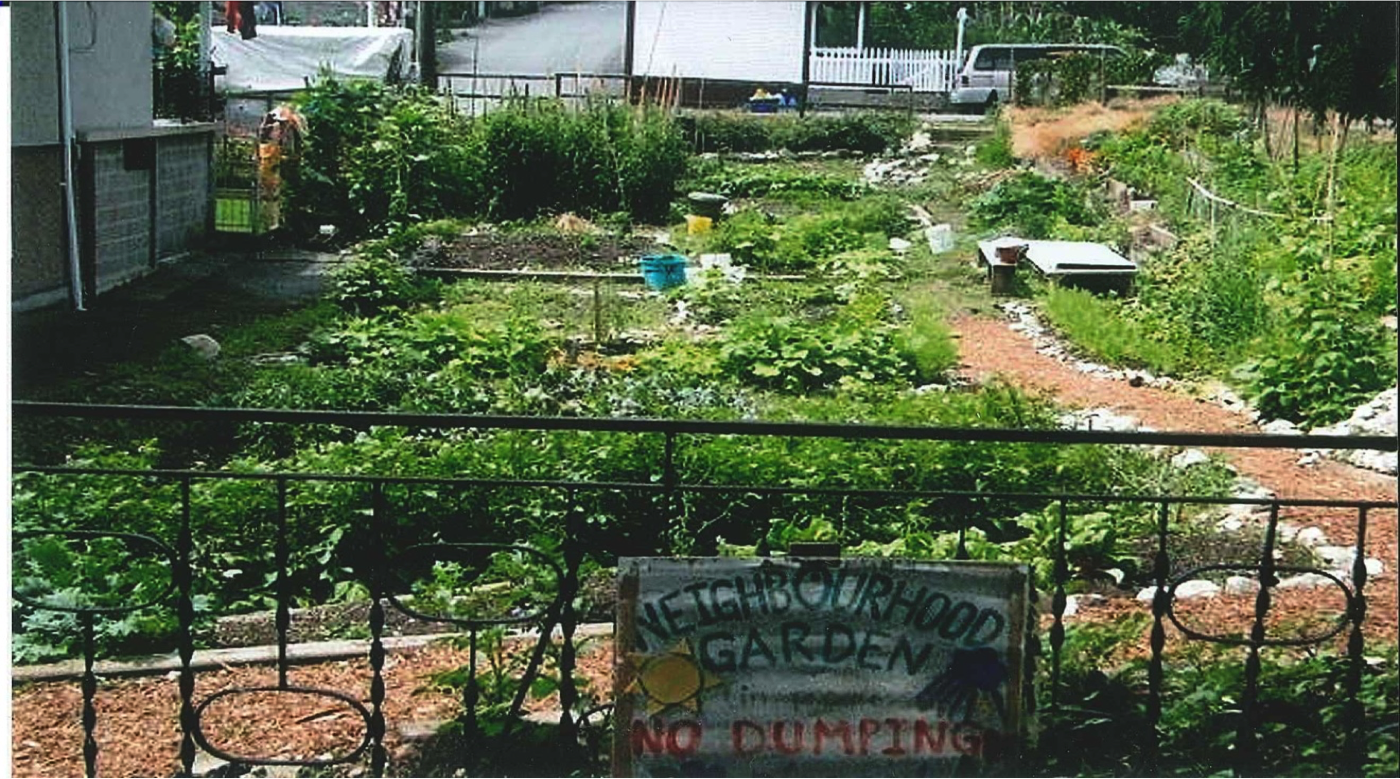
The community garden became a visible image of the kind of community that we would eventually seek to develop there. Even a little love blossomed there in the garden.
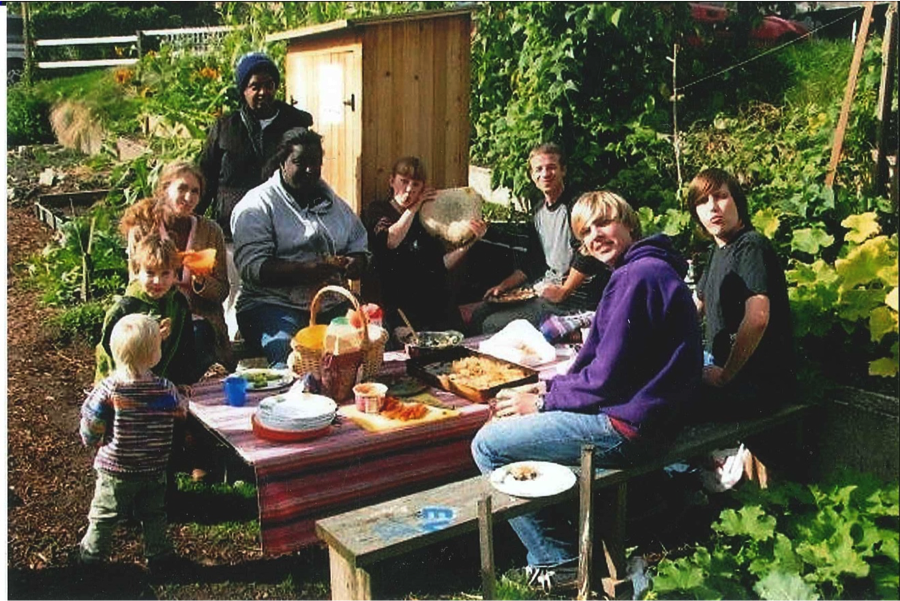

Having that empty lot on Victoria Drive prompted us to discuss and dream as a church about what we could do with that parking lot. That disappointment of having to tear the house down became the fuel that initiated the second church visioning process of the past 30 years. Out of that process came our present vision statement you read on main page of the website, a vision that has continued to hold and push us.
This housing project also eventually emerged from that process. At one of those visioning meetings, in 2002, where we talked about what to do with the empty lot, we were all given red dots to place on papers on the wall of the lower hall, indicating which ideas were the most important. At that meeting, housing emerged as the #1 priority even then before housing prices started to skyrocket.
The church later formed a group to explore what we might build there and who we might partner with to develop this empty lot and our parking lot, known in the neighborhood for the labyrinth. 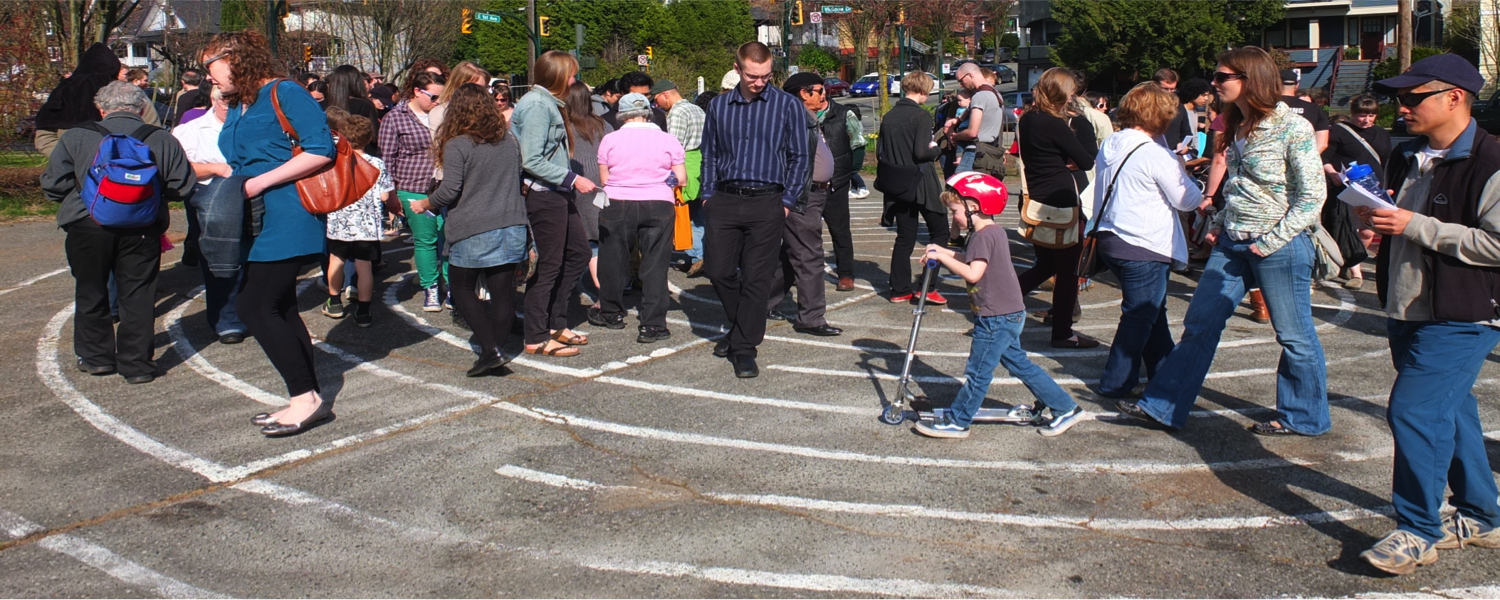
We eventually began working with More than a Roof housing and entered into a partnership agreement with them to build social housing. As we pursued this partnership, it eventually became clear to Lorne Epp, their director, and to the committee that we had a slightly differing vision for the kind of housing we wanted. Our experience of sharing life together amidst economic or social or cultural differences had become part of our DNA, a feature we knew we wanted to be part of this building. Lorne Epp, the director of More than a Roof, encouraged us to consider developing the project ourselves.
Learning and Growing
Meanwhile, we were learning a lot about living together with differences. There were plenty of missteps--learning by trial and error--but there was also a growing capacity and understanding about how to move through the challenges of shared living. So we decided to do this project more in-house. Not only did we have people by this time who had been living with others for a long time helping to shape this work at Salsbury Community Society, but we also gathered many other people who brought oodles of experience from various places of non-profit work and ventures who had a willingness to help us go, like the Starship Enterprise, boldly where we had never gone before. About this time, we also began talking more intentionally with folks living on or near the street what kind of housing they could call home. This present design with independent suites, plenty of welcoming community space, and a community garden began to take shape.
In 2013, Salsbury Community Society established Co:Here Foundation to oversee the development of the project. It’s no coincidence that so many people, both inside and outside Grandview, with experience in housing and development all jumped in. The Spirit has a way of bringing together the people needed to implement a good vision.
Finally ground was broken in 2016.
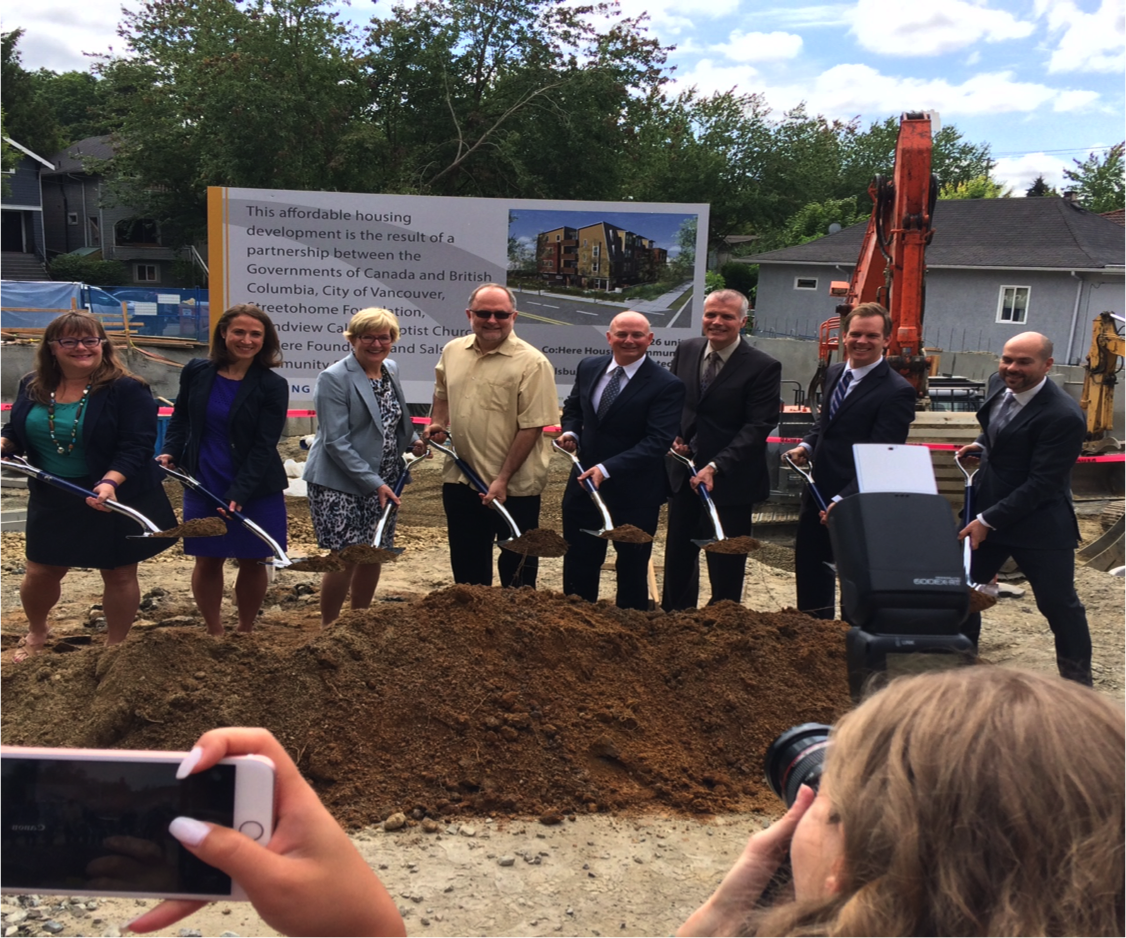
And then construction began.
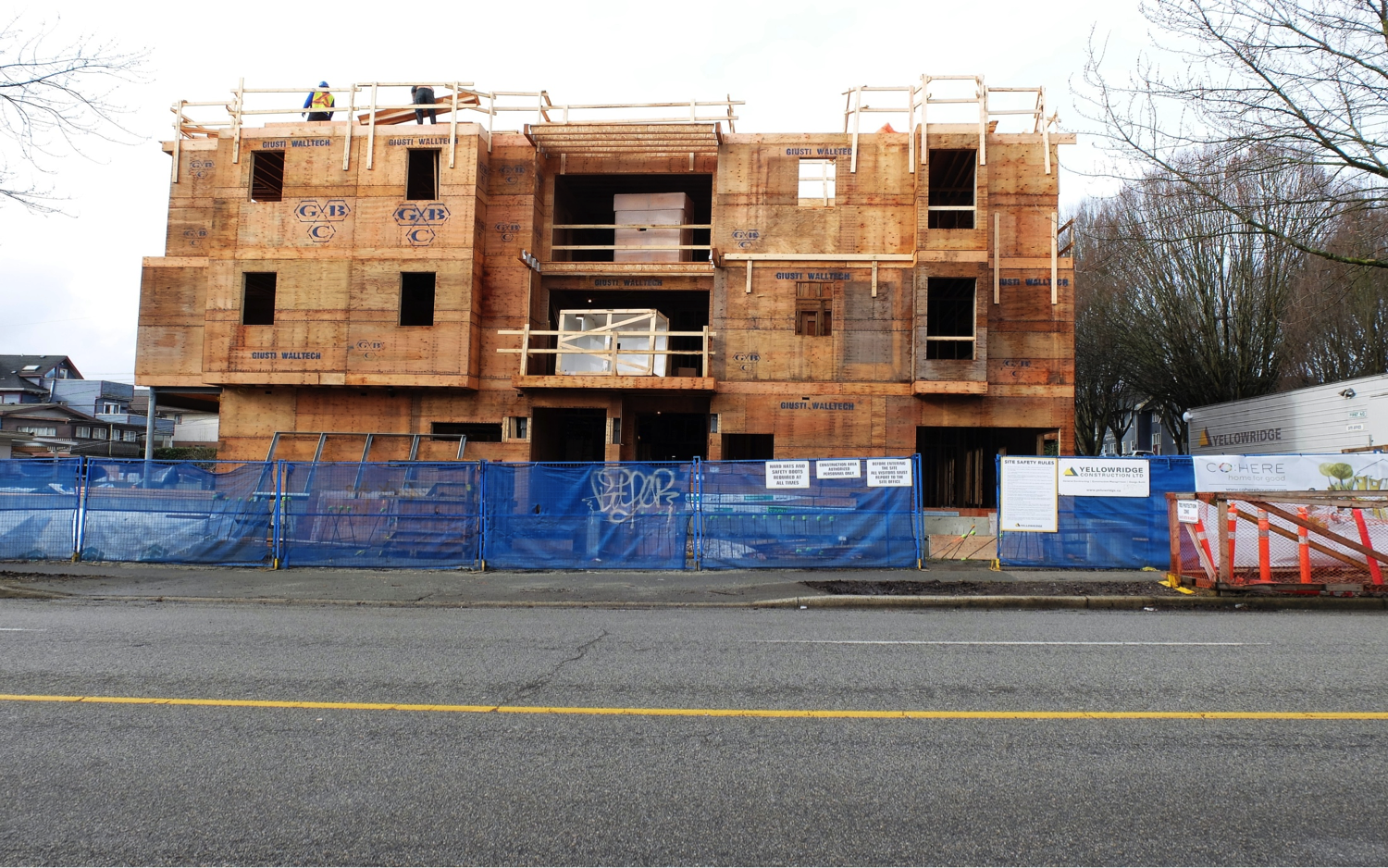
Over the last 5 years, Salsbury and Co:Here have had many hurdles to navigate their way around and over. From hiccups in choosing the construction firm, to navigating the rabbit trails in obtaining permits, to some vociferous neighborhood resistance at the re-zoning hearing at City hall in 2014. I was told by one city councilor that we were the first re-zoning hearing where a community choir came to sing in support of the project! There were over 60 speakers at that event, half from our church and half beyond it. Of neighbors, half of them spoke for and half against the project. The footage of the fifteen minutes of council deliberations that followed these speakers will need to go in the archives somewhere because it was quite a testimony to how the City views this project. I remember statements like: "What a great project! This is exactly what churches could be doing." One councilor, Adrienne Carr, said “This is a miracle!” If a city councilor uses a word like “miracle” in a public meeting, it’s a hint that the Spirit just may be up to something.
This project has been an effort of an entire community. So many people have contributed to this story in so many ways. And the story is, in one sense, only beginning. We are all being invited to be part of this story today as we share life together with folks who are residents there, and with them we are grateful that the building has been completed.
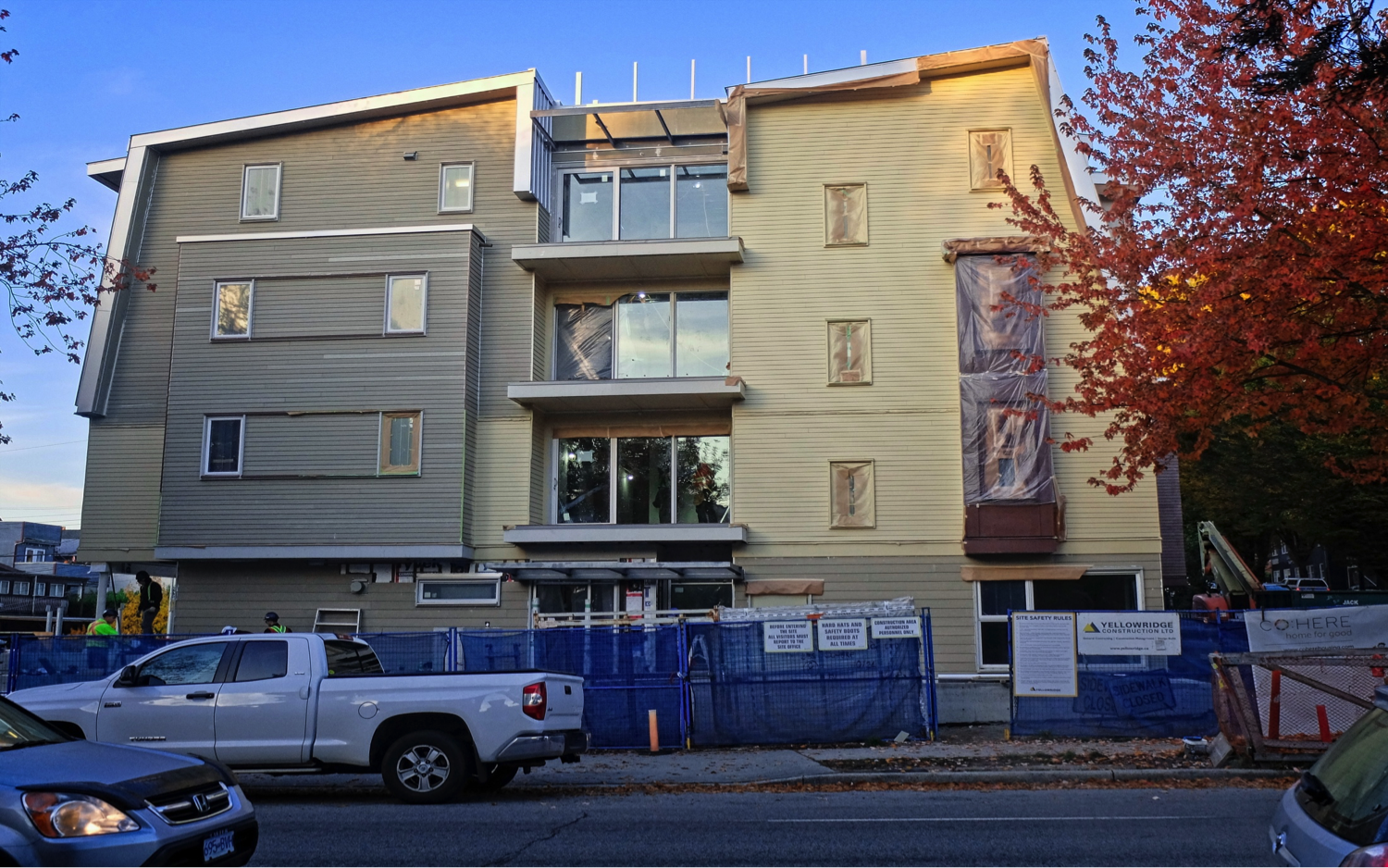
Radical Hospitality
The way the community worked together on this project and the number of people who contributed their gifts is one of the signs that the Spirit has been at work here. Recently a pastor knew about this project and all the people who have contributed asked me “How did you gather such a great group of people?” I said three things in response: I said, “First, yeah, they are a great group of people. Second, when a community embraces Jesus’ vision of welcome and transformation sprouting out of the ground of the gospel, it pulls people in. Or, more accurately, the Spirit pulls some amazing people to join in on it. Indeed, some folks have become connected to Jesus because they want to contribute to this kind of vision. The third thing is this: this community--its vision and practices--have shaped people over time. We have been changed by being a part of this community, challenged to move deeper into living out Jesus’ vision.
Here's another way to put it: We have been shaped by becoming the body of Christ. The passage in Luke 14:12-14 is a prime example of the kind of vision and practice of Jesus that has re-shaped us. In this passage, Jesus offers a picture of hospitality that is distinctive and different from the common cultural practice--then and now. Instead of inviting people over for a meal who either add to your social standing or who are mostly like you, Jesus compels those hosting a feast to welcome those who are often without an invitation, those dealing with poverty or pain. In this sense, Jesus calls us to a more radical or deep-seated hospitality than most cultures throughout history. Jesus’ call is even more radical when you consider that he made a practice not just of sharing an evening together with folks who were often outsiders but of sharing his very life with them.
When we take up that practice, a funny thing starts to happen. We no longer are seen for how much money or education or status we have or don’t have. Instead, we are recognized by our names, we become known for who we are, with all of our gifts and flaws.
That’s the gift of practicing the kind of hospitality Jesus envisions here. No matter who you are, this is good news. To be known and valued as a human being, apart from the ways we commonly measure value in our society, is not only humanizing for all of us, it meets a a deep river of desire that runs within each of us. When you are known and loved by grace, it also becomes easier to believe that God loves and values us by grace.
A recovery of these grace-shaped relationships and friendships is not merely a quaint or sentimental idea; it is also at the heart of a recovery of the Bible’s vision of justice, too. Paul J. Wadell in his book Becoming Friends argues that friendship constitutes a critically important ground of justice because “it is by learning how to seek the good of another in friendship that we gradually acquire the skill to act rightly toward every person with whom we come into contact, respecting their dignity, acknowledging their rights, and fulfilling our responsibilities toward them.” (p. 153)
To put it another way, the biblical vision of justice is one where everyone has a place at the table. Like at this beautiful table that was created by Luke Warkentin and Johannah Suttor-Doerksen for the Co:Here building.
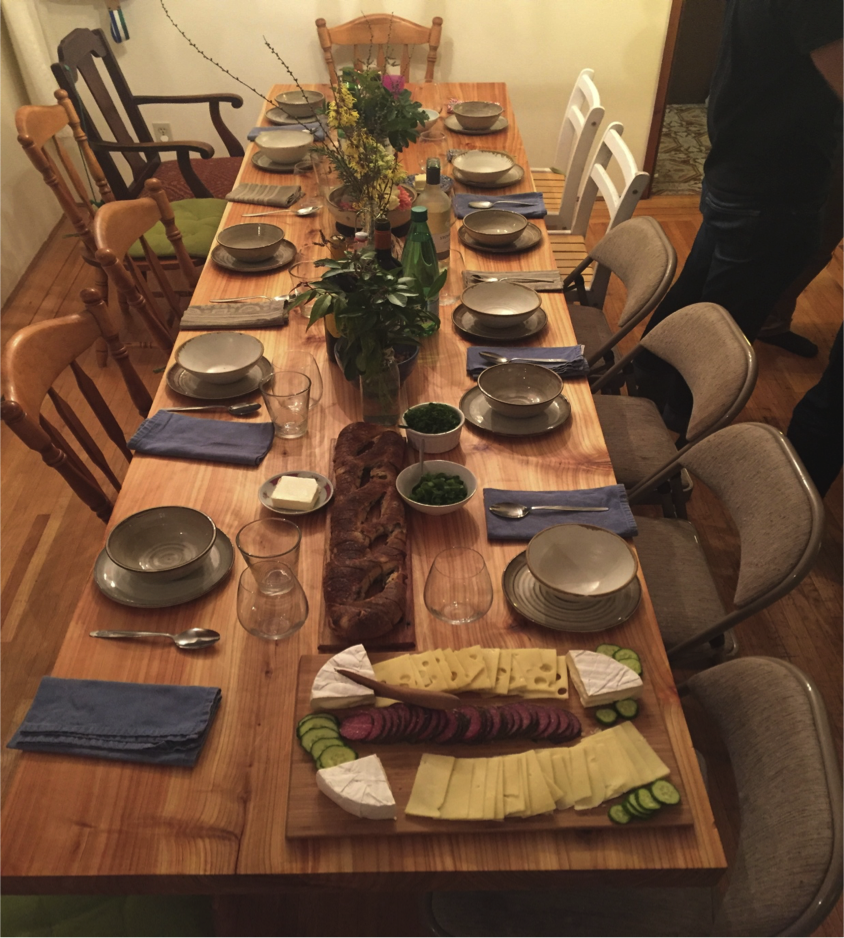
They built this table out of one of the cedar trees that stood outside the parking lot on Victoria Drive to sit in the dining room of the Co:Here building. Beautiful, eh? The Biblical vision of justice is one where everyone has a place at the table, no matter what you own or don’t own, no matter what you’ve struggled with or continue to struggle with. This vision of justice is not only about people having space at the tables where we eat, but also around the tables where we make decisions, like our boardrooms or the tables around which political decisions are made. In our experience here at Grandview, it is as we have gathered around tables and begun to see the world through one another’s eyes that we have also learned about the many injustices that some face--whether because you are refugees or single mothers or indigenous. Being together around the tables of our church building, our homes and cafes has not only opened our eyes to recognize each other for who we are, it has moved us towards justice.
These are many reasons why I am so excited about Co:Here. Co:Here offers a picture of what it means to make space at the table for one another, not only for all the residents moving into this building but for all of us. This picture is a sign for each of us of the kind of hospitality and life Christ calls us towards. My prayer and hope is that this picture will be one which inspires not only each of us here at Grandview but also other churches and faith communities who have empty parking lots. I hope that Co:Here stirs our collective imaginations to use land assets to create housing where people can gather around tables with one another across boundaries that so often divide us. And I hope that Co:Here continues to compel all of us to ask this question personally: who is gathered at the tables I sit at? Am I finding ways to share my table with those who aren’t often invited? Indeed, I think the beginning of C:Here is an invitation for a whole new generation of folks here at Grandview to creatively live into this vision in new ways.
I also believe this: if churches take up the challenge to use their parking lots to create homes for those without homes, and if followers of Jesus are found at tables with those who are often without a place at those tables, more city councilors might start using the word “miracle “ to describe the church in our city.
In telling the story of Co:Here, I hope you can see that the Co:Here project is no accident. It is a story that has the marks of Jesus all over it. It is a story that has the fingerprints of a creator God who brings life out of death and hope out of disappointment. It is one of those narratives where our story and God’s story meet. The Co:Here story is a narrative of God’s restoration and providence. It is a story that invites us to raise our hands in praise and say "Thanks be to God."
